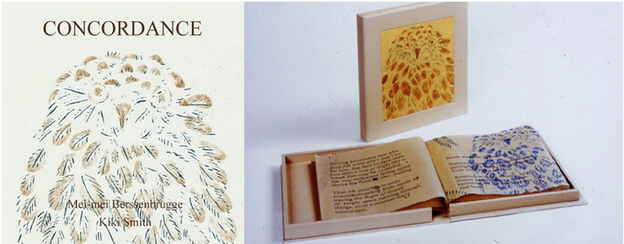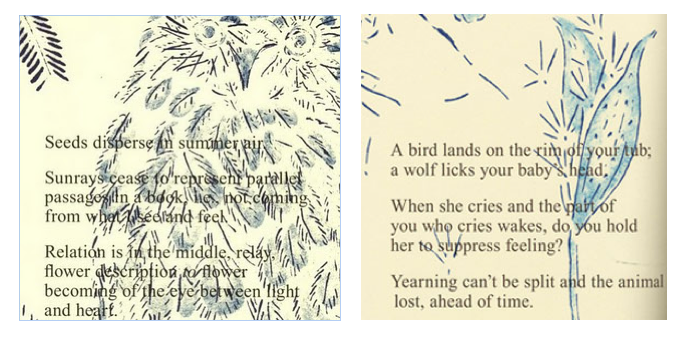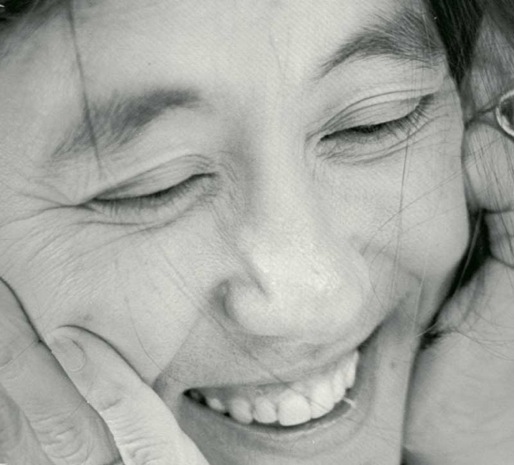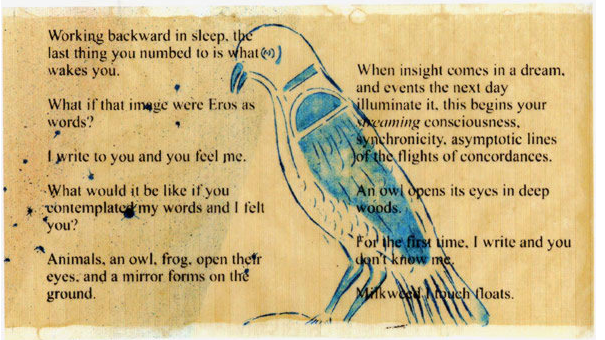A sensuous field of attention
A review of Mei-mei Berssenbrugge's 'Concordance'

Concordance
Concordance
In a 2003 interview printed in Jacket, Mei-mei Berssenbrugge noted, “For me, collaboration has been a wonderful way to open someone else’s sensibility, to use that openness like oxygen or ocean.” Concordance is such a collaboration and such an openness. Itis comprised of two poems: the first, “Concordance,” a work by the poet Mei-mei Berssenbrugge and the artist Kiki Smith, and the second, “Red Quiet,” a poem by Berssenbrugge. Berssenbrugge and Smith worked with the book artist Anne McKeown to create the work in its original form, a limited edition accordion book published by the Rutgers Center for Innovative Print and Paper. Kelsey Street Press published a trade edition of Concordance in 2006.
Concordance opens with the dedication “for the frogs and toads” and thus begins as an offering to creatures who live in both air and water and who appear as both word and image in the work. These double existences are not dualities as division but rather elements on a continuum of existence that Berssenbrugge and Smith amplify into a sensuous field of attention: “Attention gives light: shine on a baby’s calf; as he hears what I say, I become that,” Berssenbrugge writes in “Concordance.” The poem, written in three parts, inhabits the atmosphere of language and light shared between a speaker and listener, a writer and reader, between body and thought; it attends to the spatial and temporal phenomena that comprise relation. Berssenbrugge’s words and Smith’s images coexist to create a stunning ecology of plants, animals, people, water, air, light, idea, feeling, abstraction, concretion, and question.
“Concordance” begins:
Writing encounters one who
does not write and I don’t try
for him, but face-to-face draw
you onto a line or flight like a
break that may be extended,
the way milkweed filling space
above the field is “like” reading.
Because the text is so large, inhabiting the white space that surrounds verse, it is uncertain if the line breaks at the end of the page or has simply run out of room and runs over into the next line. The stanza may comprise a single line or it may be lineated verse. This formal uncertainty holds open both formal possibilities, and the stanza’s claim of “draw[ing] you onto a line or flight like a break that may be extended” resonates as the reader’s experience of the poem’s line. This possibility occurs as a question of relation, a “may be” that extends into existence. “Concordance” itself extends and co-extends; its images and text touch each other. The first “f” and tip of the “a” in “face-to-face” vibrate in a spot of blue ink, which suggests “milkweed filling space above the field,” which is “‘like’ reading.” The openness of the image allows the blue milkweed to resonate as flower or as sun or star. Ink, linguistic image, visual image, idea, and simile emerge in Berssenbrugge and Smith’s ecology as a web generating relations that the poem opens out. “Relation is in the middle, relay, flower description to flower”; these words appear on a page with a blue-feathered owl staring into the reader’s reading eyes. As you turn the page, the owl’s body and feathers extend onto the left margin of the new page. Here, transformation inheres in their presence; they recall the owl while also suggesting plant leaves bordering the text. Animal to plant. Smith’s image becomes both at once, and a single body opens out, transformed, across distinct planes into “asymptotic lines of the flights of concordances”: concordance as harmony, index, context, cross-reference, and genetic trace.

page details from Concordance (Kelsey Street Press 2006)
The poem is a concordance of surprising, feel-able relations and their bafflements: “I write to you and you feel me” and “For the first time, I write and you don’t know me.” The interesting possibility emerges in the work that feeling is a form of engagement that brushes up against and then runs askew of knowing. “Concordance”can be perceived as a textual and visual narrative of feeling thought. Thought becomes a share-able, sense-able experience in the work; it joins bodies and distinguishes them. Berssenbrugge writes, “Desire individuates through affects and powers I place on a page or plane of light vibrations, like a flowering field.” The “milkweed filling space above the field” that “is ‘like’ reading” is here inverted so that what is “placed on the page or plane of light vibrations” is “like a flowering field.” This chiasmic relation between field and text, text and field suggests “Concordance” as a space where the collaborative projects of printing — image and text — and perceiving produce a phenomenal field comprised of text, image, and one who engages them. In “Concordance’s” second section, Smith draws a hand as if reaching for a milkweed pod and milkweed filling the air, and in the third section, opened milkweeds appear, their shape turned substantial, grown the height of the page. This reach is the book’s beautiful work of opening. It is oxygen and ocean offered to the reader.

Mei-mei Berssenbrugge. Photo: Kiki Smith. Courtesy of Kiki Smith and U.L.A.E.
“Red Quiet,” Concordance’ssecond poem, is also comprised of three parts. It is printed on semi-opaque, red crêpe paper with fibers that gather and loosen, creating a rippling effect across the page. The slight transparency of the page reveals layers of text emerging from the pages beneath it. This depth appears from the play of light on the surface of the open page, and it appears differently according to the lighting situation and position of the reader. The page seems alive to the poem printed on it, and this vibrancy creates a vibrating field: “If existence is vibration, everything creates sound — trees, heart cells,” Berssenbrugge writes. Vibrating “trees” and “heart cells” sound in and as “Red Quiet.” From the work’s responsiveness to light and its evocation of continuous sound, a singing, palimpsest-like poem emerges. In the poem’s field of resonating light and text, words are both ghostly and embodied. Berssenbrugge notes, “Words spoken with force create particles.” This force, particularized, becomes a form of warmth: “I send out an emotion of warmth, welcome, the way scientists erase sound with sound.” Berssenbrugge’s welcome sings in “Red Quiet.” And Concordance is a great warmth, a great welcome.

detail from Concordance (Rutgers Center for Innovative Print and Paper 2006)